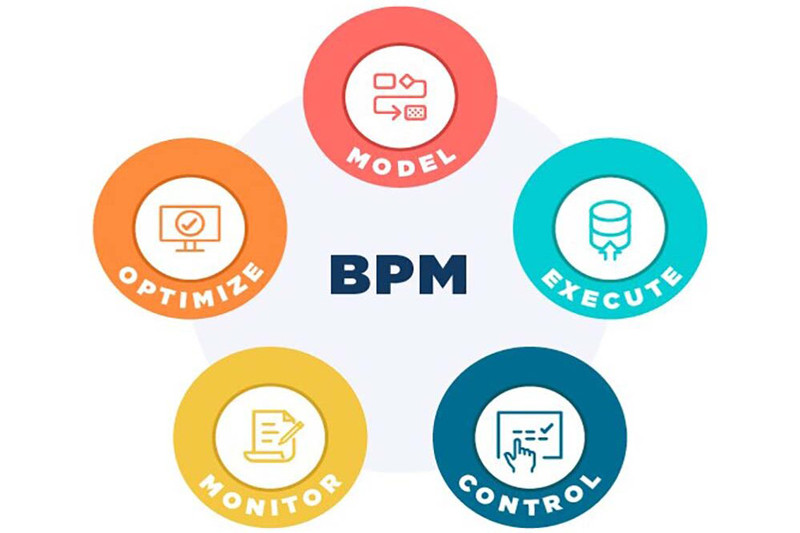Who Is A BPMS Expert And What Is His / Her Job Description?
Business Process Management Includes Concepts, Methods, And Techniques For Designing, Monitoring, Configuring, Executing, And Analyzing Business Processes.
These processes involve individuals, organizations, systems, and other sources of information. This set of procedures is called BPMS.

Business Process Management (BPMS) What is the Business Process Management System title?
Business process management is a management paradigm that aims to control and improve organizational processes in the context of information technology. BPM is the culmination of all shared experiences, thoughts, and professional advances in business management based on this definition. One thing to keep in mind is the close interaction between the two concepts of BPMS and BPMN.
More precisely, BMPS tools are based on BPMN symbols. In this way, models are created based on BPMN signs and symbols to turn the output of the work step by step into the final and executable model. For this reason, a person who intends to get a job as a BPMS expert should have complete information about organizational processes, organizational chart concepts, organizational trend analysis, organizational process optimization, organizational form design, and ISO standards.
What is the difference between office automation and BPMS?
Office automation and BPMS should be complementary and used to improve organizational productivity. Office automation systems generally provide solutions for managing unstructured enterprise data such as text files, videos, emails, and similar instances. At the same time, BPMS software is a tool for managing structured data such as office forms, product requests, invoices, and invoices. Therefore, both devices are needed for the integrated management and electronic circulation of different types of organizational data.
What are the duties of a BPMS expert?
The main task of a BPMS expert is related to recognizing and analyzing business processes, along with designing and implementing software systems related to the design of statistical reports and management reports related to the organization.
Organizations expect a BPMS expert to model the customer’s business processes using the appropriate software and analyze, simulate, and execute the resulting model directly. In this regard, as a BPMS expert, you need to be familiar with the following topics.
The life cycle of business processes
Business process management happens in one cycle. This cycle consists of related phases as follows:
-
Process Identification: At this stage, the business problem is raised, the processes related to the problem are identified, and the boundaries of the process and their relationship to each other are identified. The output of process identification is a new or updated process architecture that outlines the procedures in the organization and their relationship to each other. In some cases, process identification is made parallel with determining performance indicators. The adopted performance index is often used for process analysis. In this book, we will link the identification of performance indicators with the process analysis process.
-
As-is process modeling: The current state of each related process is documented and usually takes the form of one or more as-is process models. BPMN is the complete process modeling standard globally, and almost all good organizations in the world model their processes with the BPMN standard. In addition, most good BPMS globally have chosen the BPMN standard as their process modeling tool.
-
Process Analysis: At this stage, issues related to the current status process are identified, documented, and measured using a performance indicator. The output of this step is a structured set of problems. These issues are usually prioritized in terms of their impact and sometimes the effort required to address them.
-
Process redesign: This step aims to identify changes in the process to help solve problems identified in previous phases and help the organization achieve its performance goals. For this purpose, multiple change options are analyzed and compared using selected performance indicators. It means that process redesign and analysis are closely related: if the new alternatives to the proposed changes have already been analyzed using process analysis techniques. Finally, the most promising combined change options lead to process redesign. Usually, the output of this step is the to-be process model, which is used as a basis for the next phase.
-
Process implementation this stage, the changes needed to move from the as-is process to the to-be process must be prepared and implemented. Process implementation considers two aspects: managing organizational change and process mechanization. Corporate change management refers to the activities needed to change process implementers’ work. On the other hand, process mechanization refers to developing and deploying IT systems or advanced versions of existing IT systems that support to-be processes. The best tool for implementing business processes is to use of BPMS software. There are many BPMS software in the world, and this diversity causes businesses to make the wrong choice of tools. There are several criteria and indicators that you can study in the BPMS software evaluation indicators of BPMS software To choose the right BPMS software.
What skillset does a BPMS expert need?
Typically, organizations seek to attract people with a bachelor’s degree in industrial engineering, information technology, or computers. In addition, at least two years of relevant work experience in this field is required. The technical skills that a BPMS expert should be proficient in include the following:
-
Familiarity with C # and Angular programming languages
-
Mastery of BPM concepts and process modeling with BPMN2 standard
-
Familiarity with Bizagi software
-
Familiar with ways to analyze, design, improve and manage business processes
-
Knowledge of at least one BPMS software
-
Appropriate experience in the field of database management and concepts of designing, implementing, and optimizing databases
-
Capable of documenting and reporting
-
Familiar with coding logic
-
Some companies ask people how familiar they are with HTML, CSS, JS, and SQL.
-
Problem-solving and decision making power
-
High responsibility
-
Capable of documenting and reporting











